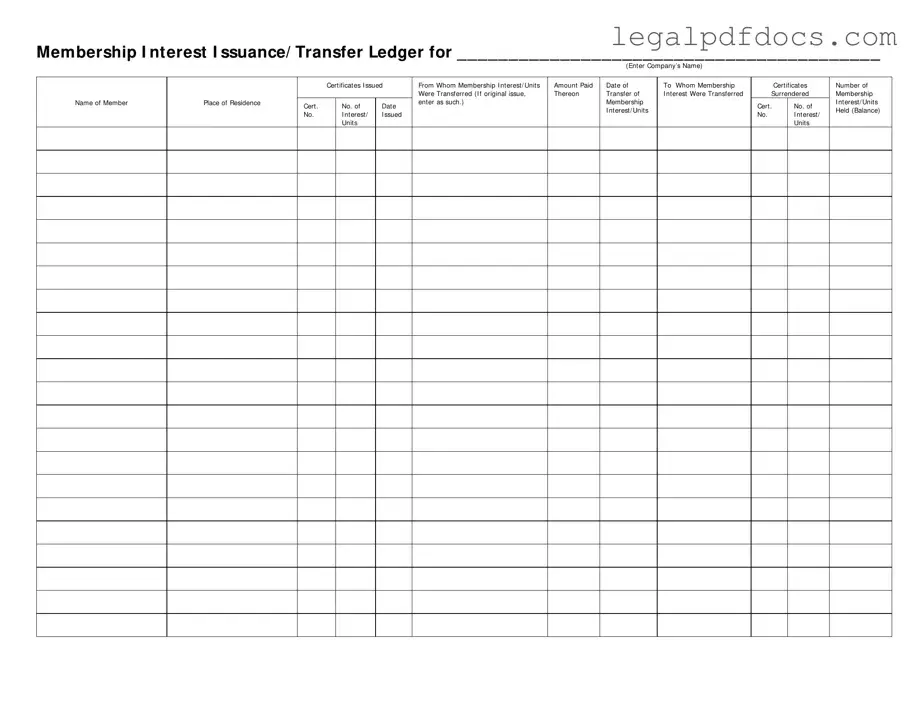Fill Out a Valid Membership Ledger Template
The Membership Ledger form is a document used to track the issuance and transfer of membership interests in a company. It includes details such as the company’s name, certificates issued, amounts paid, and the names of members involved in the transfer. Ensure your records are accurate by filling out the form below.
Open Membership Ledger Editor Here
